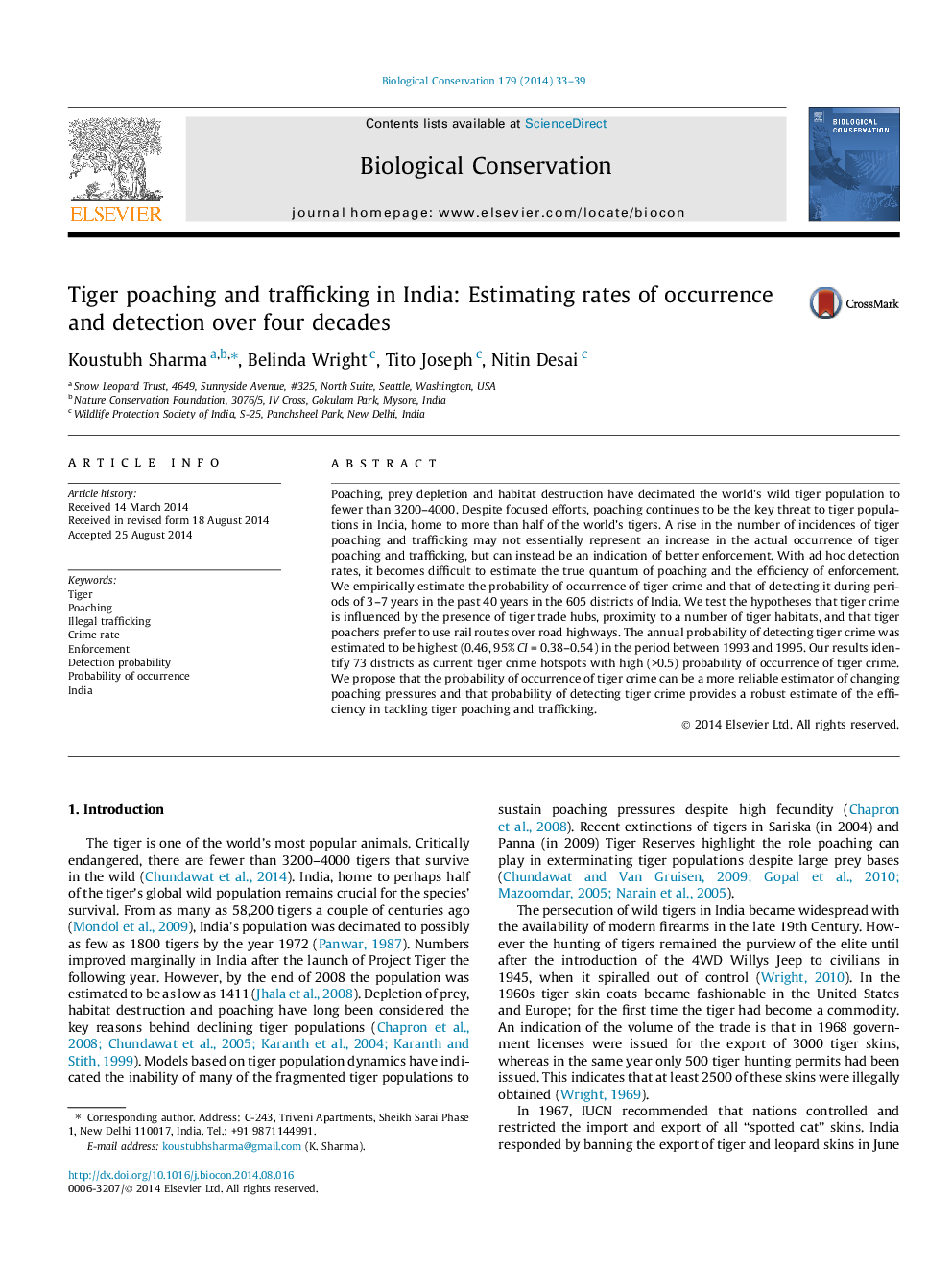| Article ID | Journal | Published Year | Pages | File Type |
|---|---|---|---|---|
| 6299941 | Biological Conservation | 2014 | 7 Pages |
Abstract
Poaching, prey depletion and habitat destruction have decimated the world's wild tiger population to fewer than 3200-4000. Despite focused efforts, poaching continues to be the key threat to tiger populations in India, home to more than half of the world's tigers. A rise in the number of incidences of tiger poaching and trafficking may not essentially represent an increase in the actual occurrence of tiger poaching and trafficking, but can instead be an indication of better enforcement. With ad hoc detection rates, it becomes difficult to estimate the true quantum of poaching and the efficiency of enforcement. We empirically estimate the probability of occurrence of tiger crime and that of detecting it during periods of 3-7Â years in the past 40Â years in the 605 districts of India. We test the hypotheses that tiger crime is influenced by the presence of tiger trade hubs, proximity to a number of tiger habitats, and that tiger poachers prefer to use rail routes over road highways. The annual probability of detecting tiger crime was estimated to be highest (0.46, 95% CIÂ =Â 0.38-0.54) in the period between 1993 and 1995. Our results identify 73 districts as current tiger crime hotspots with high (>0.5) probability of occurrence of tiger crime. We propose that the probability of occurrence of tiger crime can be a more reliable estimator of changing poaching pressures and that probability of detecting tiger crime provides a robust estimate of the efficiency in tackling tiger poaching and trafficking.
Related Topics
Life Sciences
Agricultural and Biological Sciences
Ecology, Evolution, Behavior and Systematics
Authors
Koustubh Sharma, Belinda Wright, Tito Joseph, Nitin Desai,
